Around Aunt Gerda's Table
Recipe box sparks memories of her wild, creative, oft chaotic kitchen
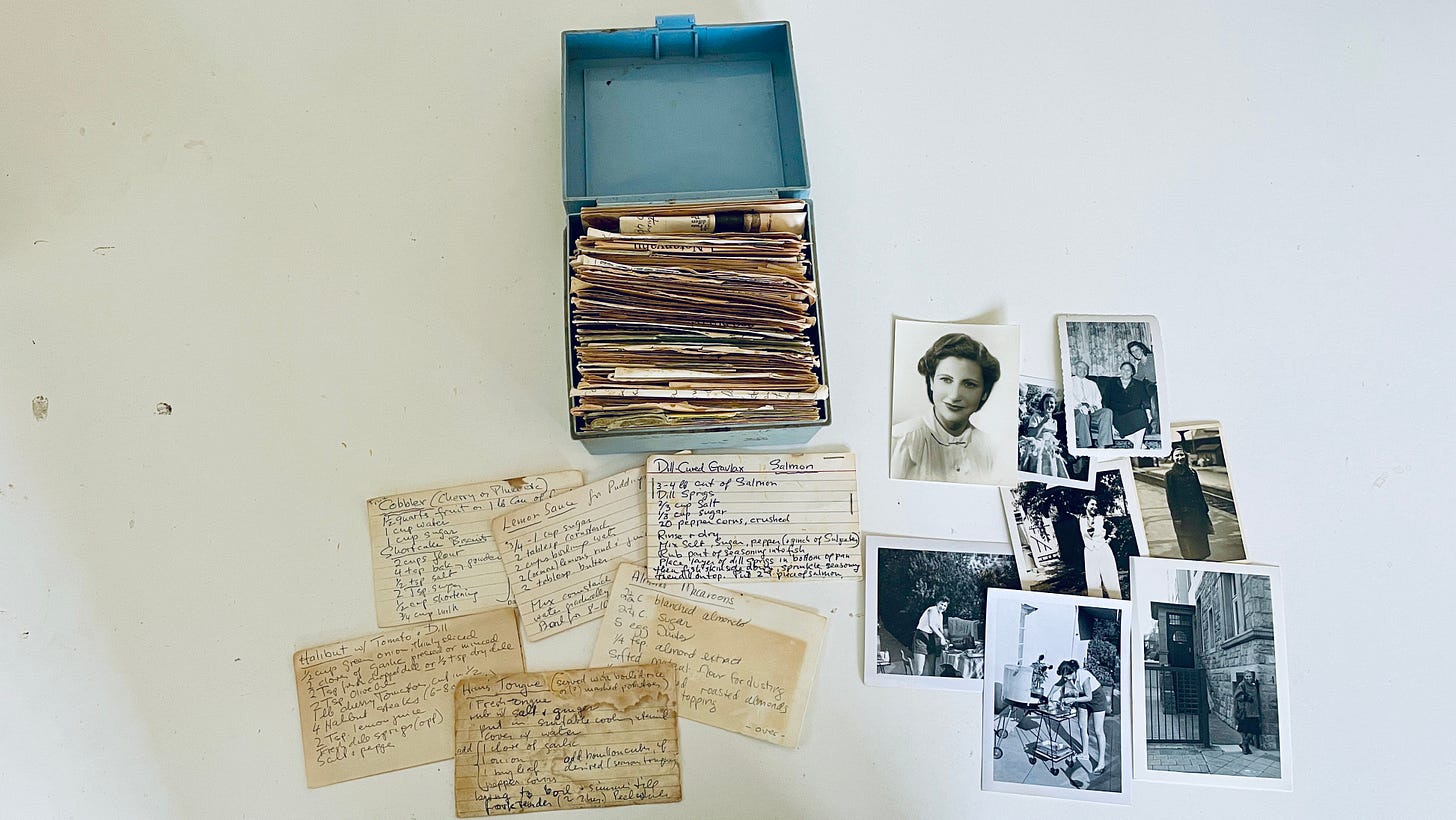
When my cousin Margalit and her husband Peter embarked on an ambitious kitchen remodel this spring, she consulted with her two siblings and decided to offer me a box of recipes she’d inherited from her late mother, Gerda Mathan, one of my father’s three younger sisters.
“Because you’re doing this food blog and you’re so interested in how people cook and the history of their cooking, I thought you’d be the right person to have it,” she told me.

“What a treasure!” I thought as I started leafing through the box. I found recipes not only from Gerda but also from my mother and my Aunt Ilse. Some were familiar. There was my mother’s famous pound cake recipe, Ilse’s matzo balls made with ground almonds and nutmeg, the plum tart that had shown up at countless family gatherings and that I’d blogged about—along with an ancient marble-covered recipe notebook I inherited from my mother.
There was Mom’s apple strudel, with Gerda’s scribbled note that the filling contained sliced apples, raisins and cinnamon but that “Flora put no sugar” in it. (I intend to write about it in a future post, along with a recipe Gerda titled “Cake à la Ilse,” my Aunt Ilse’s popular pudding cake.)
There were the dishes I remembered tasting at many a holiday party at Gerda’s house, as well as at my parents’ table and at those of other relatives. There were recipes no one I know seems to make anymore but that I knew from childhood—like “cheeze sticks,” frosty date balls and boiled tongue.
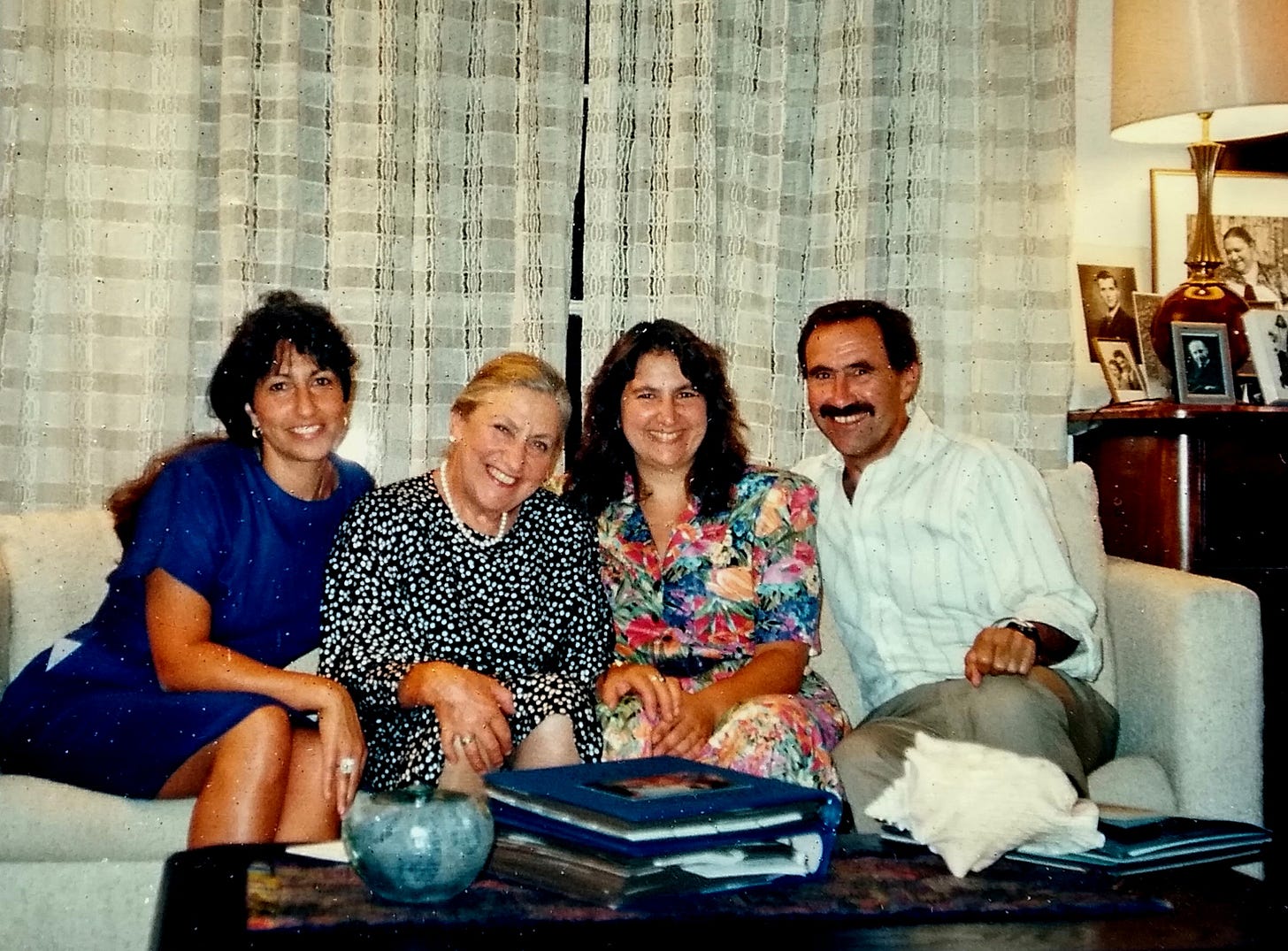
As with my mother’s notebook, thumbing through Gerda’s recipes turned into a journey into the past. In my late teens and 20s, I’d spent many evenings at my aunt’s home high in the Berkeley hills, sitting at her kitchen table, staring out the window over treetops toward the San Francisco Bay, particularly dreamy at sunset or on evenings when the fog rolled in.
Gerda listened to my boyfriend woes, shared family stories and frequently sought my opinion on the latest black-and-white photos she’d developed in her basement darkroom. She had taken workshops with Ansel Adams, Imogen Cunningham and Ruth Bernhard; taught photography classes to students who became lifelong friends, and traveled—often on her own or with a group—throughout California, the U.S., and the world, invariably with camera in hand.
She’d experimented with infrared photography and light studies using a brownie camera. Along with her children, many of her nieces and nephews still prize the beautiful pictures they inherited from her and display them proudly on their walls. I always thought—and still do—that she ought to be better known.
Always when I visited her home there was delicious food that Gerda seemed to improvise from whatever was in her refrigerator—chicken, beef, lamb, a Greek or Israeli salad, odd grains I’d never tasted—like barley or bulgar or couscous—crusty bread with soft butter, plenty of wine and, if I spent the night, pour-over coffee for breakfast brewed in a glass Chemex coffeemaker, unlike the nondescript percolator variety my parents served.
This was the late ‘60s and early ‘70s—just the beginning of the culinary revolution that began with Julia Child and continued with Alice Waters of Berkeley’s Chez Panisse. Long before any of us had heard of California Cuisine or the farm-to-table movement, Gerda was harvesting fruits and vegetables from the garden she tended with loving care and incorporating them into her cooking.
There were Santa Rosa plums in summer and pears in fall, just in time for make large sheet-pan tarts that her daughter and all the cousins remember from family gatherings for the Jewish High Holidays.
They had a thin, “cakey” crust, Margalit recalled and were always served “mit schlag,” a large dollop of whipped cream.
And, if fresh fruit for the tart wasn’t available, no problem. At the bottom of this post you can find a recipe for a kuchen (cake) that calls for canned peaches or pears, though I imagine fresh would work just as well. Gerda credits it to The Settlement Cookbook, also a beloved source for my mother and so many other immigrant Jewish cooks.
When the family gathered at Gerda’s house for a Shabbat meal or a holiday, invariably there was drama—and a bit of chaos, like the time when the kitchen caught fire during a Hanukkah celebration and the fire department had to be called.
Unlike my mother—or me to this day—Gerda never seemed fazed by guests arriving when dinner was nowhere near ready. She just enlisted everyone to help, served hors d’oeuvres and poured wine liberally. Joy—and sometimes chaos—reined.
For more about my intrepid, entertaining aunt, here are a few excerpts from my conversation with Margalit. You can listen to the entire discussion by clicking on the link below:
Ruth: I have so many wonderful memories of eating at your mother’s home with the family and of the holiday dinners we all had. Your memories may be different than mine, but I always thought Gerda was a wonderful cook.
Margalit: She was a great cook and she was also a very chaotic, wild cook.
R: Even for you as her daughter?
M: Oh yeah. The kitchen was always a mess, and my sister and I hated cleaning up after her, which was our job. The other thing was she was sort of this wild cook in that she could look in the refrigerator and just make things out of whatever was there, but she also cooked out of Gourmet magazine and Julia Child.
R: Did you ever try to make any of her recipes?
M: The main thing I have made are her recipes for Passover cakes and Hanukkah or holiday cookies. I can’t say I’ve tried many of the stews because I’m kind of a random cook, and I tend to cook whatever’s in the refrigerator and don’t tend to plan. So I’ve gotten to be a little more like her.
R: I noticed among your mother’s recipes several that say Joy of Cooking or Settlement Cookbook. My mother also had those cookbooks.
M: And they would also write things down and get recipes from friends. But my mother loved to entertain, as I’m sure you remember. And she would make everything, from hummus to tahini to baba ganoush, all kinds of salads, and then for dessert, she’d have sour cream coffee cake or a sheet pan pear or plum cake from the fruit on her trees. She would also make plum chutney that was really delicious and a couple of times she made canned pears in red wine.
R: I remember a lot of things with fruit, but I don’t remember her canning anything.
M: That was like a period. You know, as a cook, you go through different periods. We try out things. The other thing that was funny in our house was she made dinner every night.
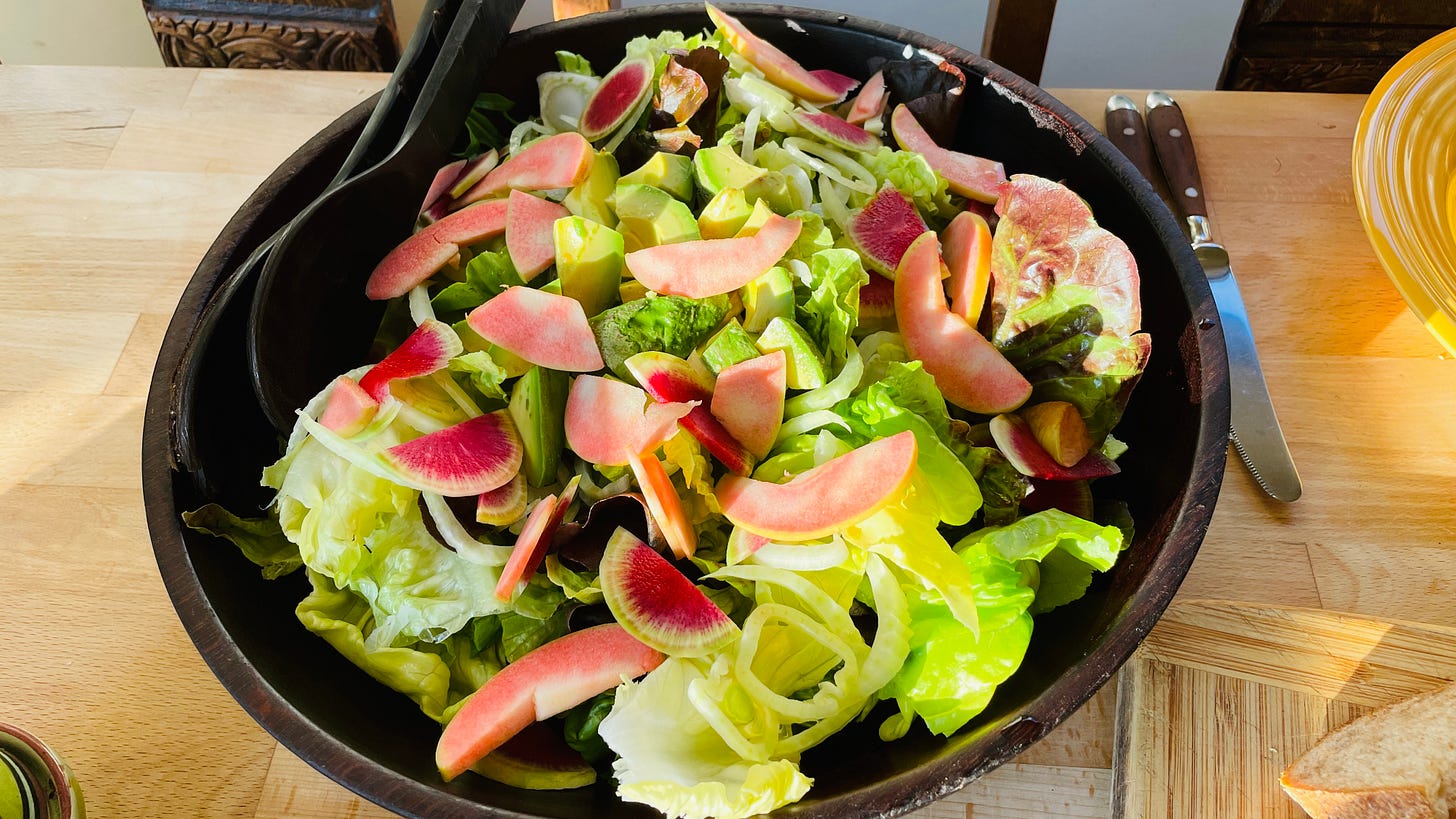
R: No takeout, right?
M: Even restaurants. She was really uncomfortable in restaurants. Two other things I remember as a kid was she always made us lunches and we never got any kind of packaged anything. We mostly didn’t get to eat school lunch and she didn’t make tunafish. There’d be leftover chicken and she’d make a chicken salad or she would make salmon salad. She loved to use lemon, but she’d never pay any attention to the lemon seeds, so I’d have these incredible, delicious sandwiches and then you’d bite into a lemon seed. Every day I’d say, “Mom, do not put lemon seeds in the salad!” She’d say, “I’m trying, I’m trying. I just can’t see them!”
R: That sounds like her, but I didn’t eat with her every day. Every meal I ever had with her was delicious. And she had such style in the way she set a table.
M: Oh my god, her tables were beautiful! She would take stuff from the garden, and she would buy beautiful squashes. she would buy fruits and vegetables that she thought were beautiful and just put them on the table. She was so artistic that way. Lots of color, always a beautiful tablecloth.
R: I have a memory of a Hanukkah party when your mother was making latkes and the back of the stove caught fire.
M: The story was that Gerda’s friend Jesse, a biochemist and a food snob, was helping to cook the latkes. He told Gerda she couldn’t turn off the stove because the oil needed to stay hot in order for the latkes to be any good. So we’re all in the dining room saying prayers when smoke starts pouring out of the kitchen. The grease, the paper towels and everything caught fire. We had to call the fire department. So Gerda got a new kitchen out of the whole thing!
And now, without going through the trauma of a latke fire, Margalit and Peter will soon have a brand new kitchen of their own. Life comes full circle.

From Gerda’s Recipe Box
Peach or Pear Kuchen
(Originally from The Settlement Cookbook)
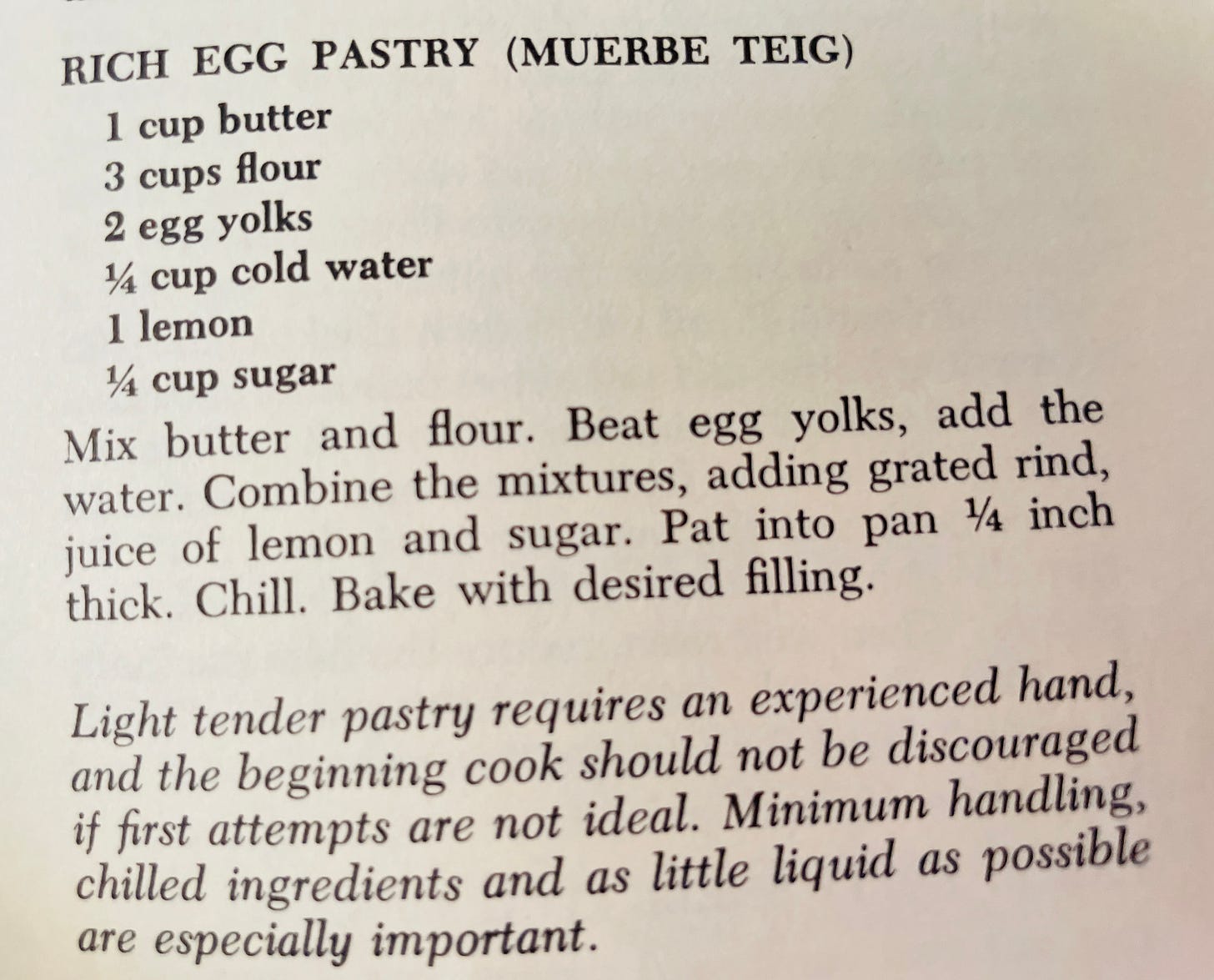
I’ll be back soon with a picture of the cake I made from this recipe—plus some more specific directions!
Thanks for reading about my Aunt Gerda and her dynamic kitchen and cookery. Are there members of your family who have inspired you to change the way you cook, set the table or entertain? Please leave a comment and let me know. Thanks also for being a subscriber, and, if you’re not, why not join? It’s free!
See you next time.



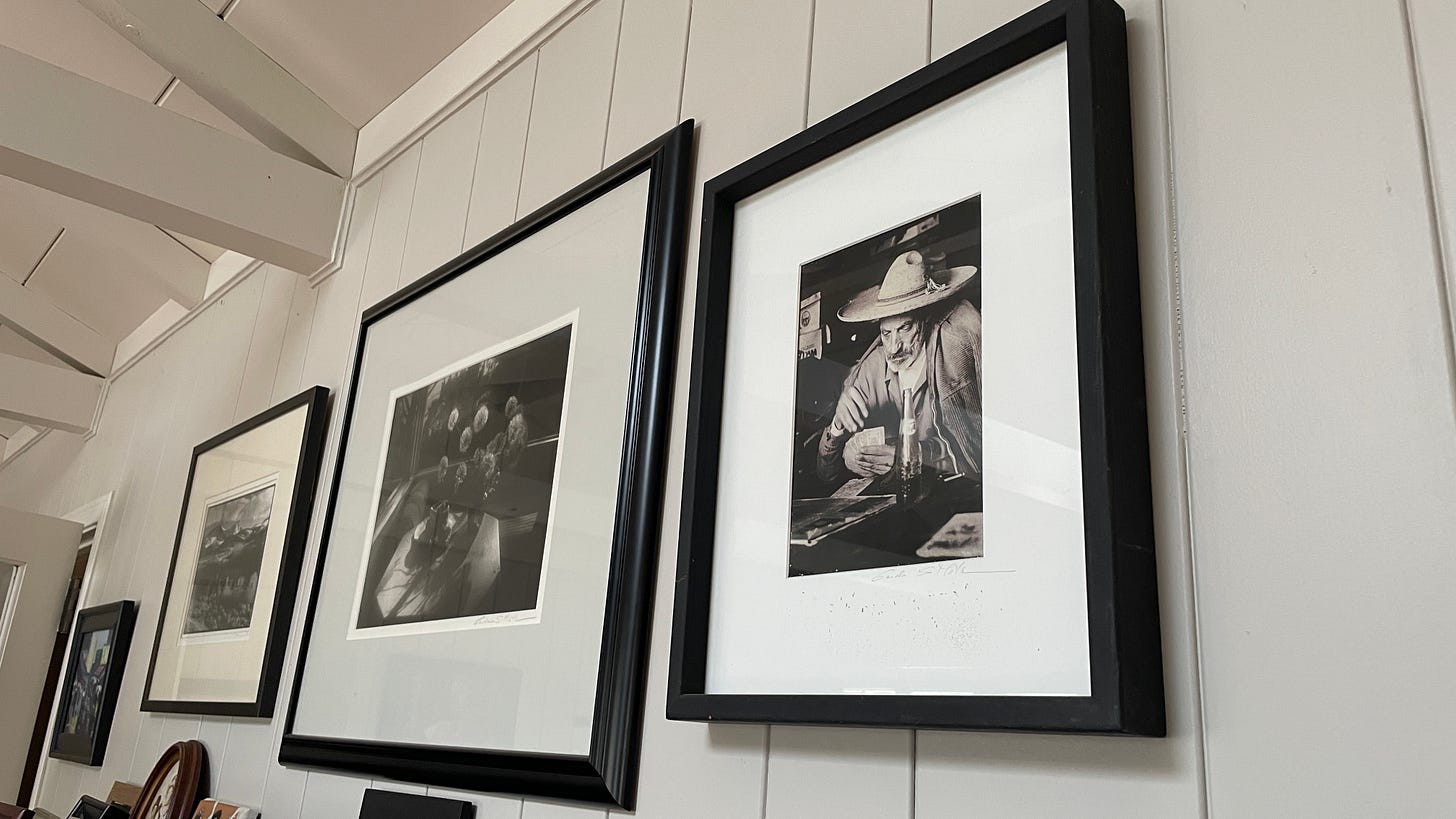
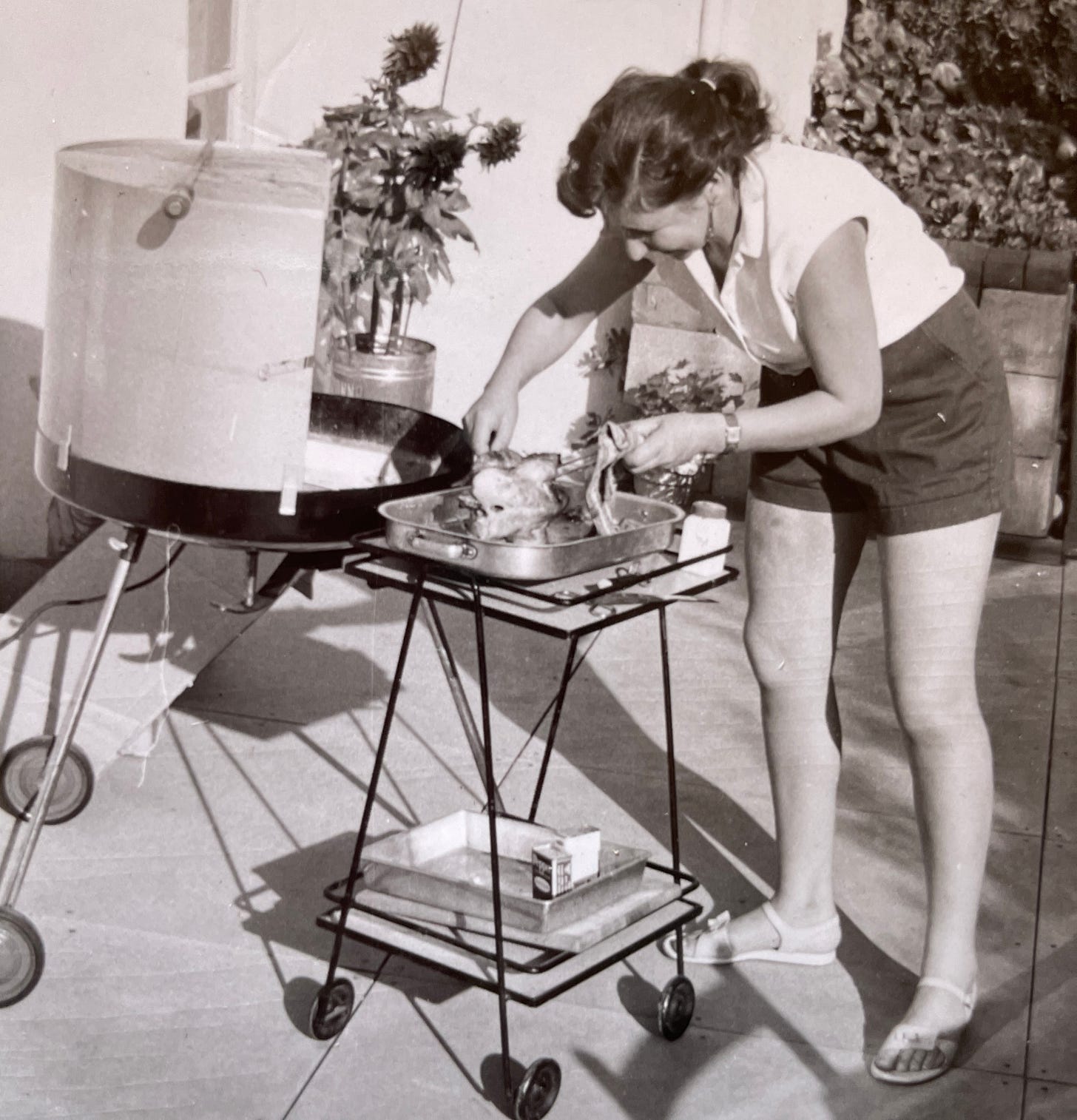
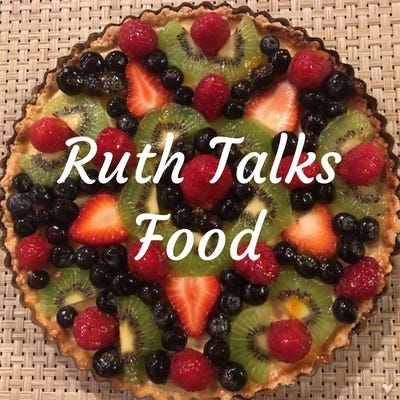
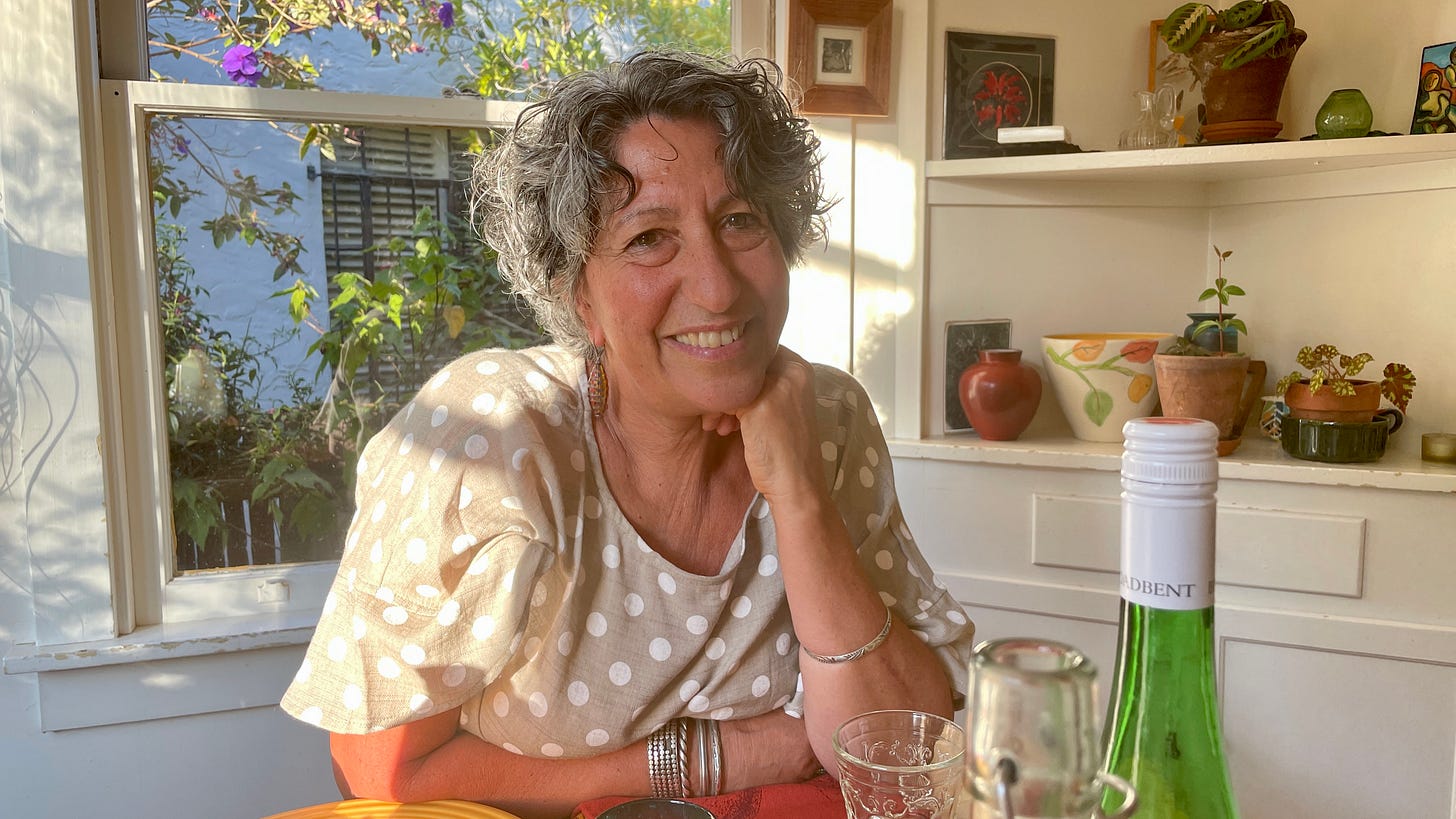

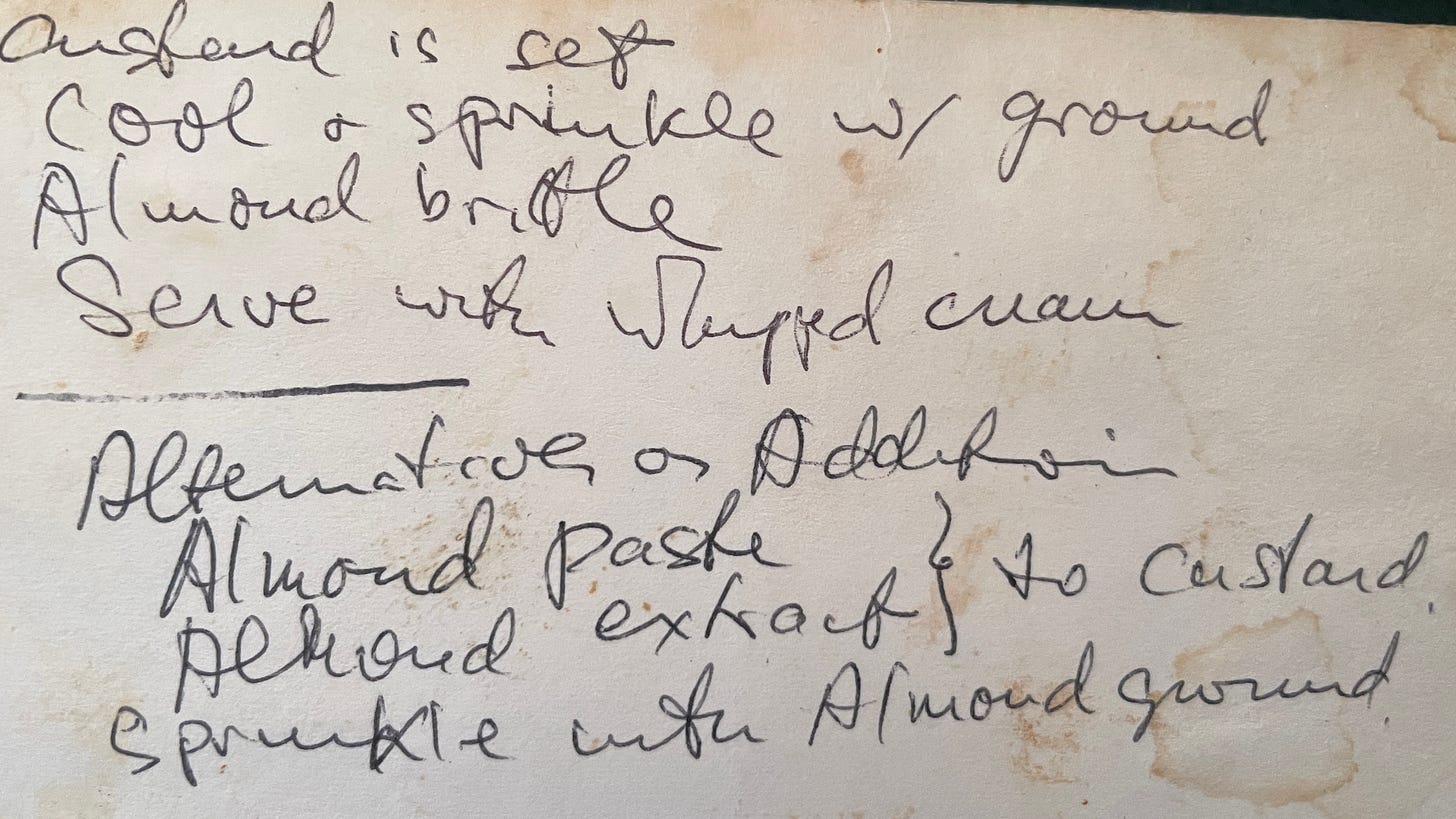
What a heart-warming story about food and family. I love the recipes that my mom wrote out by hand and tucked into a letter that she was sending to me. Thanks for sharing.
Gerda should have had her own TV show. I was hoping for the matzo ball recipe made with ground almonds, which really sounds lovely. I kept trying matzo balls (despite not being Jewish) until someone made them beautifully light, and they were a revelation. I imagine almond flour would be a big plus. By the way, this piece made me nostalgic for my beloved Northern California. ❤️ Lovely read, Ruth